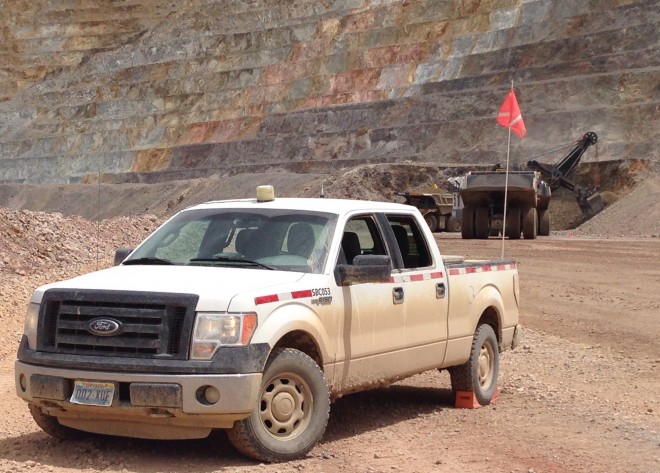
Ford gave unsuspecting customers this stealth pickup truck to test out the new F-150′s aluminum body. Photo: Ford
To see if the all-new aluminum F-150 pickup is as tough as it has to be, Ford disguised six prototypes as conventional steel models and asked unknowing customers to beat the crap out of them for two and a half years.
Switching from steel to lighter, stronger aluminum allowed Ford to cut 700 pounds from the F-150, improving fuel economy while making it stronger. But if the switch hurts the trucks performance or durability, Ford could have a disaster on its hands. The F-150 is consistently the best-selling passenger vehicle in the country. Its the all-star in Fords lineup.
But if youre going to mess with your star player, you take precautions. Fords engineering team decided to test the aluminum design in the real world to augment 10 million miles of in-house testing. The decision to send a next-generation product into the wild so far ahead of its debut is unprecedented. Its unique as far as I know, said Larry Queener, program manager for the 2015 F-150.
Ford wasnt worried about things like the aluminum doors or hood (something thats been used on past models), but it had to be damn sure the cargo box on one of the worlds hardest-working trucks could take the abuse meted out by contractors and construction workers, ranchers and roughnecks. So in late 2011, its R&D team bolted aluminum cargo boxes to half a dozen 2011 F-150s and sent them to three of Fords best industrial customers. It provided the trucks for free, explained that it was testing new materials and new methods, and asked the clients to treat them like they would any other truck.
For two and a half years, the trucks trundled into gold mines, covering hundreds of miles each day. They worked on the construction of a hydroelectric power plant in Pennsylvania and a highway interchange in Alabama. They carried energy company crews along overgrown paths and up steep mountain roads in North Carolina.
We go to extreme areas and do extreme work, said Art Golembiewski, regional equipment manager for Walsh Construction. Were hard on all our equipment, we expect to get 110 percent out of it every day, and thats how we operate. We were told to run it like we wanted to break it, and thats what were doing to em.
Everyone was pleased with the trucksexactly what Ford wanted to hearbut a few things raised eyebrows. Surveyors at Barrick Mining found their magnetic safety beacons wouldnt attach to the bed. Others noted that despite the abuse heaped upon the truckshuge rocks and heavy equipment were routinely tossed into the unlined bedsthe dents and dings never showed red rust like those in the old F-150.
Ford learned from the stealth testing and made changes accordingly. One crew removed the tailgate to improve visibility, so Ford made it easier to uninstall. The automaker made the aluminum of the bed thicker, added reinforcement in the sides of the cargo box, and tweaked the aluminum alloy to improve durability.
The truck also endured no end of abuse during in-house testing to ensure it can serve what Ford calls the 90th-percentile customerthe one guy out of 10 whos going to work his truck harder than anyone else. The 100,000 miles that a guy like Golembiewski puts on his truck is going to be a whole lot tougher than the 100,000 a suburban soccer dad is going to rack up. Ford went above and beyond testing the 2.7-liter V6 Ecoboost engine, too. It essentially disguised a 2015 truck to look like a 2014 model and entered it in the Baja 1000, a brutal race run flat-out through the desert, to see how it would do. It finished the race, no problem, Queener said.
So Ford has good reason to be supremely confident in the new F-150. Starting this fall, customers will be able to test out the aluminum for themselves.
http://www.wired.com/2014/05/ford-f150-aluminum-testing/











